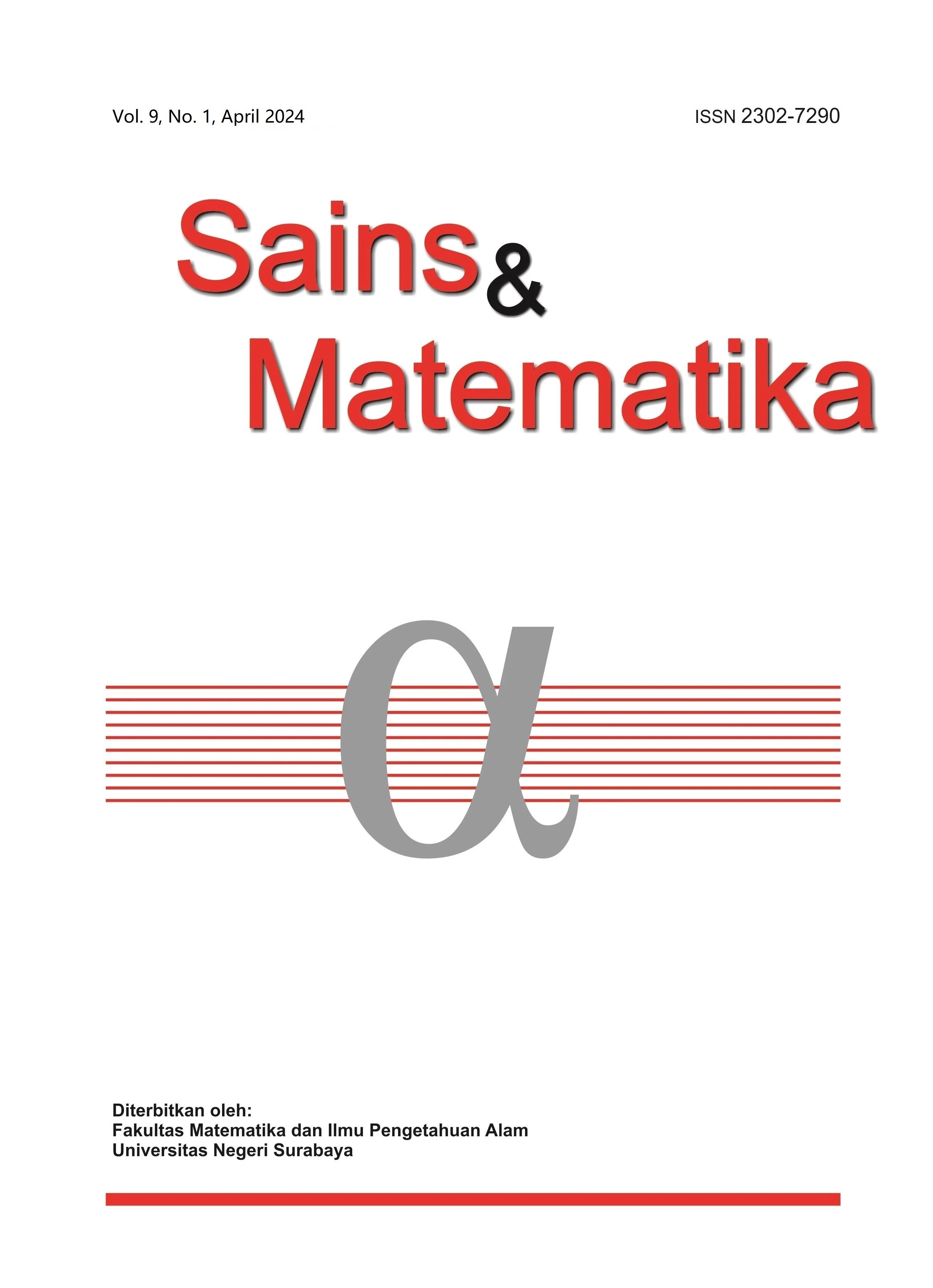Green Synthesis TiO2 Menggunakan Ekstrak Daun Pepaya ( Carica Papaya L.) sebagai Bioreduktor yang Berpotensi dalam Aplikasi Fotokatalitik
DOI:
https://doi.org/10.26740/sainsmat.v9n1.p1-7Abstract
TiO2 terkenal di antara oksida logam sebagai bahan multifungsi yang memainkan peran penting dalam berbagai aplikasi karena stabilitas fisik dan non toksisitasnya yang baik. Di sisi lain sintesis TiO2 secara konvensional menggunakan bahan-bahan kimia yang berbahaya dan beracun, seperti asam sulfat dan hidrogen peroksida menyebabkan proses sintesis TiO2 menjadi tidak ramah lingkungan serta berpotensi menimbulkan dampak negatif bagi kesehatan manusia dan lingkungan. Penelitian ini melaporkan hasil sintesis TiO2 NPs yang mudah, tidak beracun, hemat biaya dan ramah lingkungan menggunakan ekstrak daun papaya (Carica Papaya L.) sebagai agen pereduksi yang memiliki potensi aplikasi untuk fotokatalitik. Analisis XRD mengungkapkan struktur kristal tetragonal untuk TiO2 NPs memperlihatkan sifat dan ukuran kristalnya sebesar 9.65 nm. Hasil SEM memberikan informasi terkait morfologi bulat dan terdapat aglomerasi, kemudian analisis EDX menunjukkan puncak puncak unsur titanium (Ti), oksigen (O), karbon (C) dan kalium (K) serta persentase atom dan berat yang sesuai. Dengan energy band gap sebesar 2.46 eV, menjadikan TiO2 NPs hasil greensynthesis memiliki potensi fotokatalitik yang luar biasa, hal tersebut dikofirmasi dengan hasil grafik absorbansi TiO2 NPs dalam mendegradasi pewarna congo red 30 ppm selama 180 menit, dan menghasilkan persentase degradasi sebesar 95.52 %.
Downloads
Published
Issue
Section
License
Naskah yang diserahkan penulis haruslah sebuah karya yang tidak melanggar hak cipta (copyright) yang ada. Naskah yang dimasukkan harus naskah orisinil dan belum pernah dimuat di terbitan manapun. Segala hak yang tercantum pada diri penulis, melekat pada pengelola jurnal untuk mengedit, mengupload, dan mempublikasikan naskah kepada khalayak umum. Abstract views: 400
,
Abstract views: 400
, PDF Downloads: 810
PDF Downloads: 810














